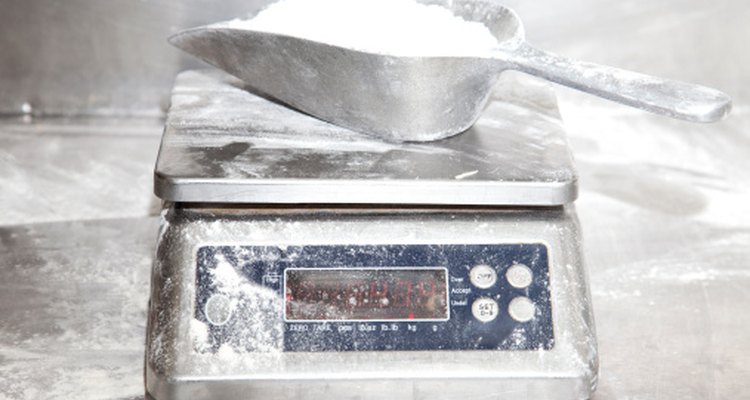
Recipes that use the metric or British Imperial system measure many ingredients by weight instead of volume. This can be confusing and a little frustrating for those used to measuring in cups, not ounces or grams. Those used to the metric system acquire food scales to measure for recipes. But if your only tools are measuring cups and tablespoons, there is still a way to determine the weight of flour. By knowing the weight of flour itself, you can calculate the weight needed for a recipe using volume and skip the scales completely.
Learn the weight per cup of the type of flour you are using. All purpose flour, for example, weighs 4 ounces. or 110 grams per cup. For a quick guide to the weights of commonly used flours, check out the tips section below.
Learn the weight per teaspoon or tablespoon of the type of flour you are using. Sometimes, flour is used in small amounts that are more easily calculated by knowing the weight of a teaspoon of flour. Once cup equals 48 teaspoons or 16 tablespoons. Use these ratios to determine smaller increments of weight. For example, 1 tablespoon of all-purpose flour weighs 18 and1/3 grams each (because 110 grams divided by 16 equals 18.3).
Determine the amount of flour you need. Divide the weight listed in the recipe by the weight of each cup. For example, if your recipe calls for 247.5 grams of all-purpose flour, divide 247.5 by 110 (the number of grams in a cup of flour). The result is 2.25 or 2 and 1/4 cups of flour.
Related Articles
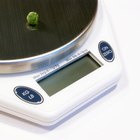
How to Convert a Measuring Cup to a ...

How to Find Out How Many Cups Is 3 ...
What Kind of Flour Do You Use for a ...

The Weight of Raw Lentils to Cooked ...

Can I Substitute Rolled Oats for Flour ...
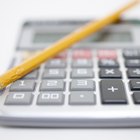
How to Convert Gsm to Ounces

How to Replace Flour With Oat Flour

What Are the Differences Among 24K, 22K ...

How to Substitute Cornstarch for ...

Bread Flour vs. Cake Flour in Sponge ...
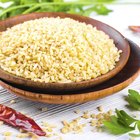
Bulgur Vs. Farro

How to Cook Cheesecake in a Cupcake Pan

Substitutes for Garbanzo Bean Flour

How Many Calories Are in 1/4 Cup of ...

What Does Bust Size Mean?

Difference Between Metric & American ...
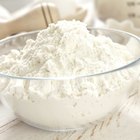
How to Use Millet Flour

How Many Calories Are in 1 Tablespoon ...

How to Replace Milk and Butter in Baked ...

Does Flour Spoil?
References
Writer Bio
Based in Houston, Texas, Meg Butler is a professional farmer, house flipper and landscaper. When not busy learning about homes and appliances she's sharing that knowledge. Butler began blogging, editing and writing in 2000. Her work has appered in the "Houston Press" and several other publications. She has an A.A. in journalism and a B.A. in history from New York University.
Photo Credits
Smith Collection/Digital Vision/Getty Images